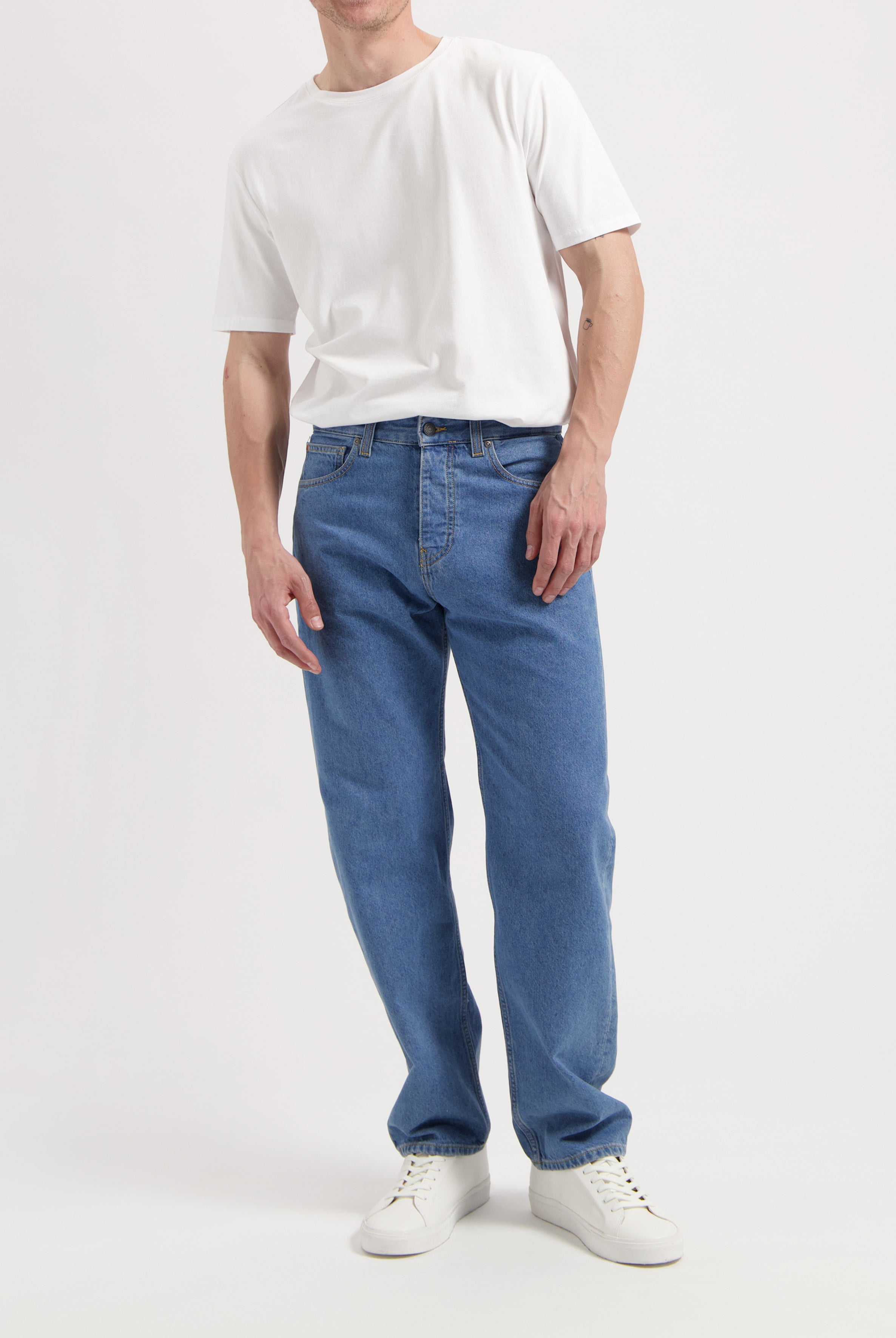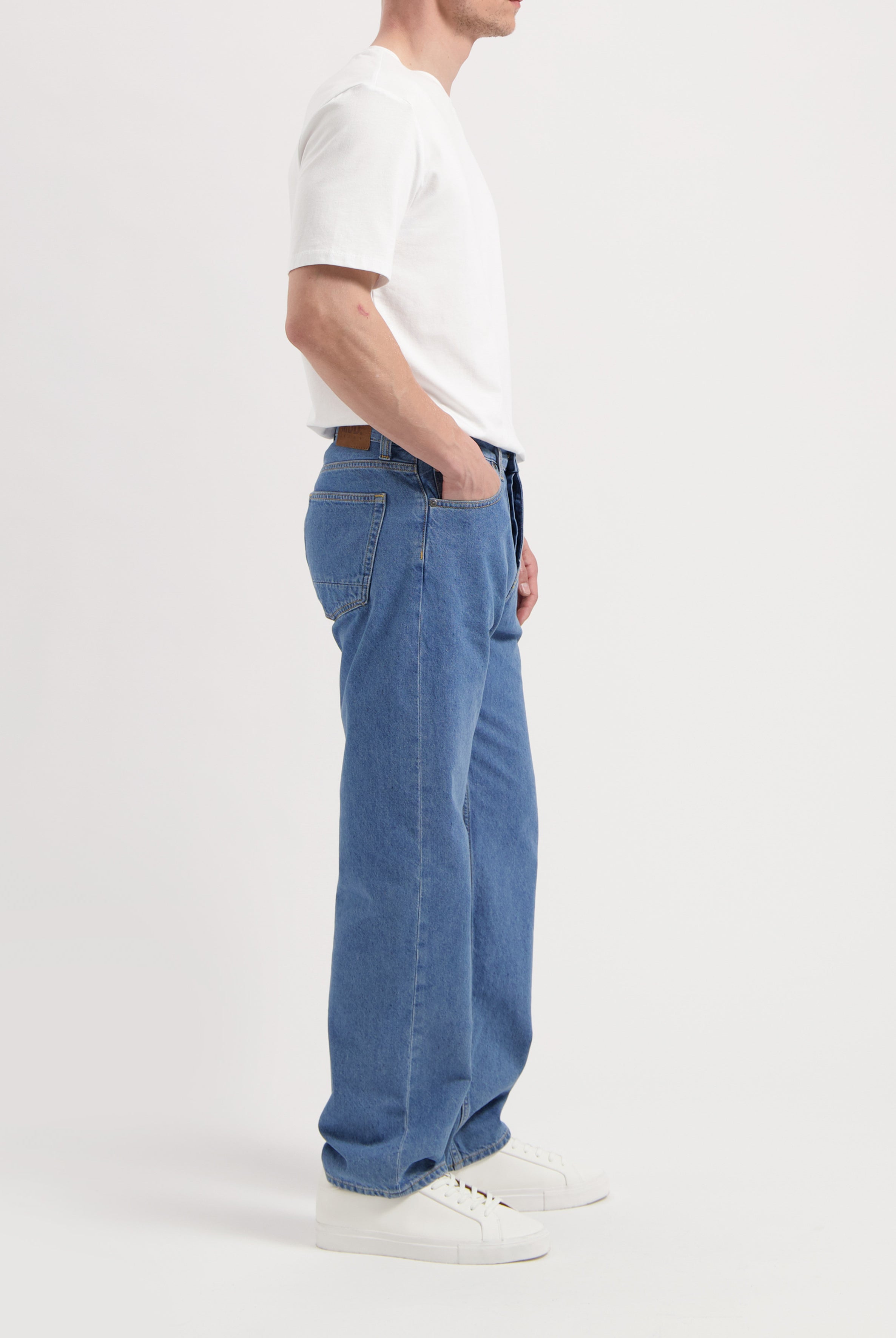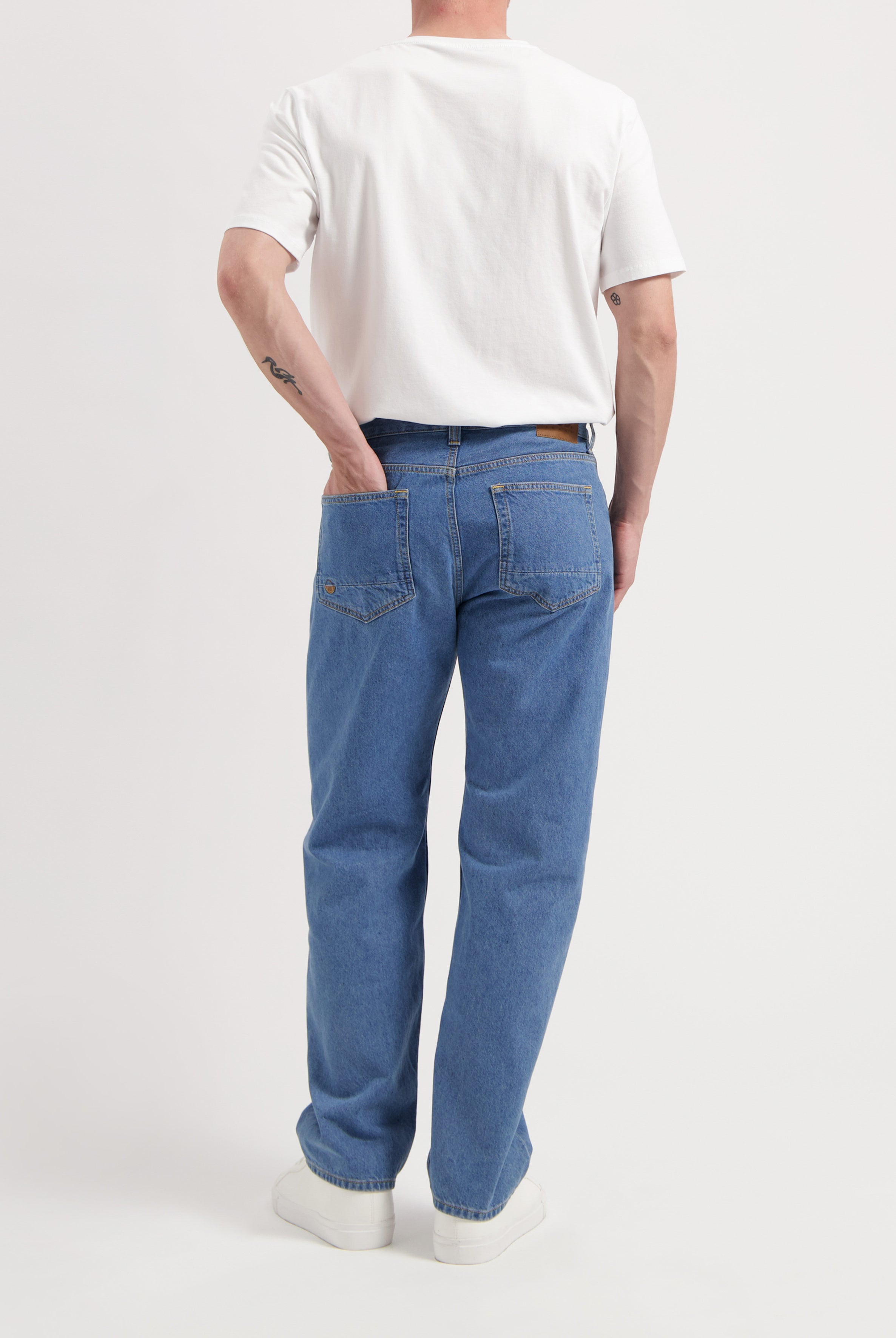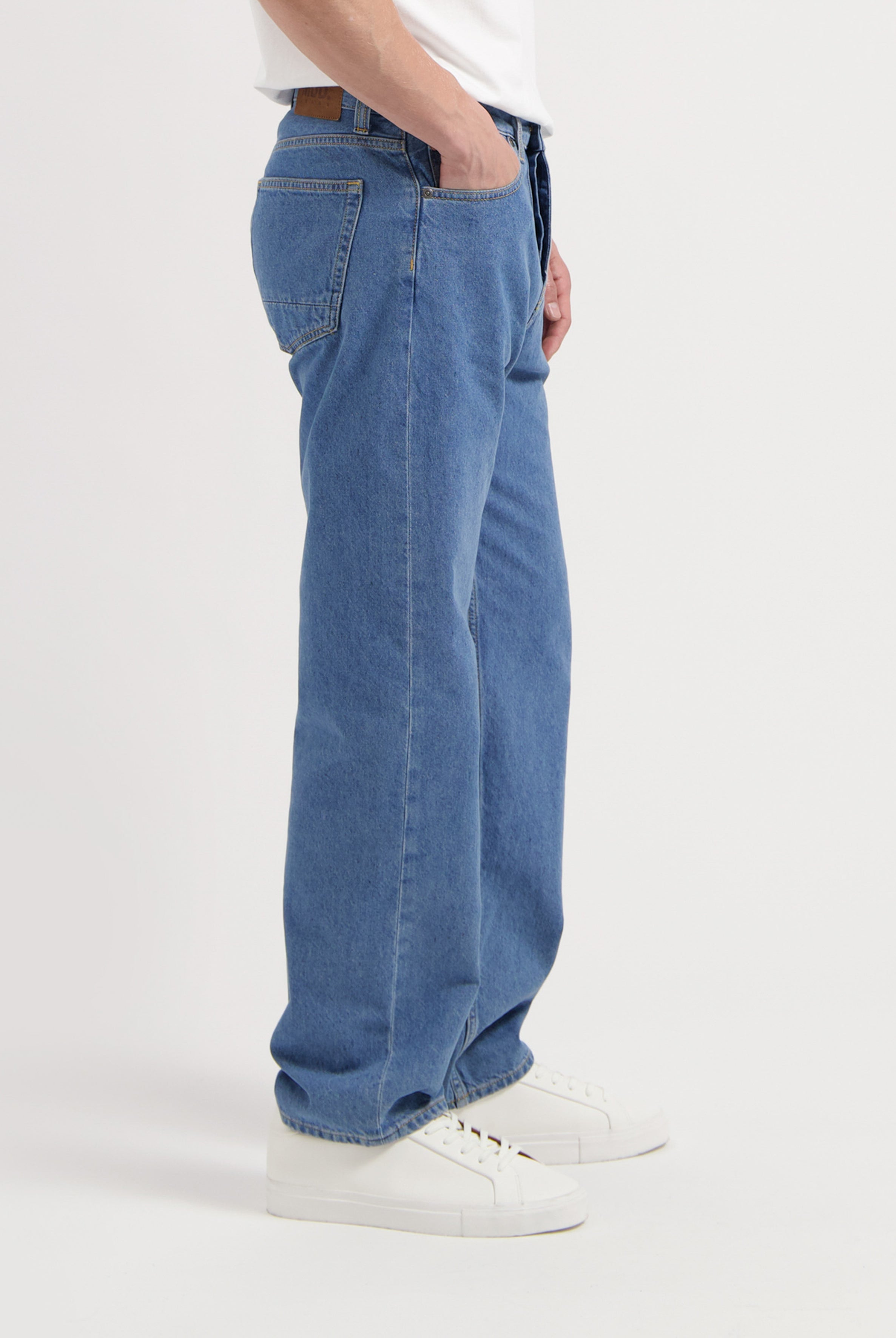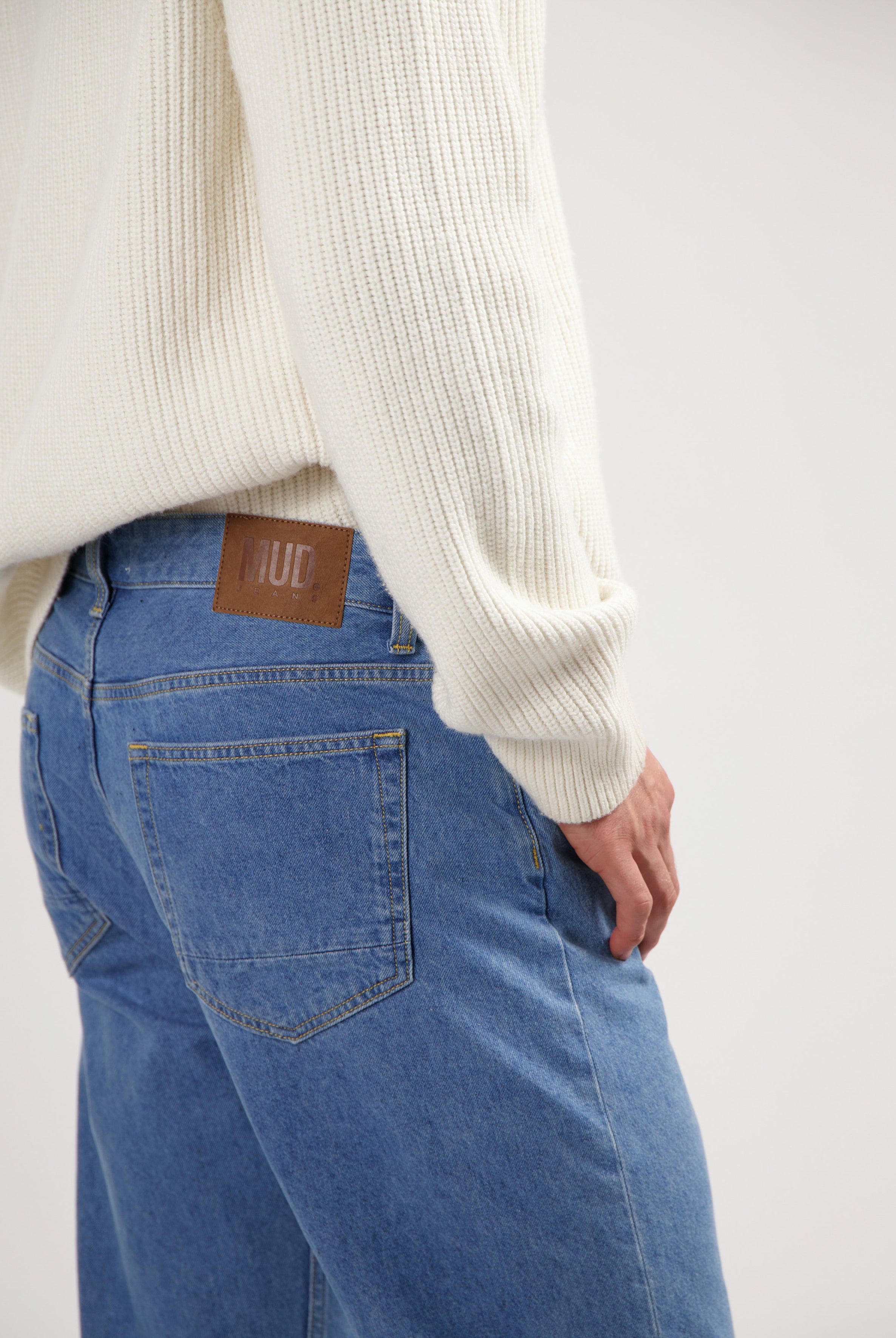[[ROW-FULL-IMAGE]]
 [[ROW-FULL-IMAGE-END]]
[[ROW-FULL-IMAGE-END]]
-
How are they sustainable?
The first important thing to question is, what actually makes them sustainable? Unfortunately, there is a lot of green washing in the fashion industry, and therefore it is important as a consumer to get to the root of the brands claims. Have a closer look at whether the denim is recycled aka circular, or is made using certified organic cotton. If you can’t find a solid reason for the denim being sustainable, you should be skeptical of the claims.
[[ROW-FULL-IMAGE]] [[ROW-FULL-IMAGE-END]]
[[ROW-FULL-IMAGE-END]]
-
Is the brand communicating transparently about their production?
In the same vein as the previous question, it’s important to find out whether the brand is communicating about their production methods. Production evidently has a lot to do with the impact the company has on our planet. If the company is transparent and communicates about for example their washing and dying methods this is a good sign. The core of sustainability within the denim industry starts from acknowledging that denim is a big polluter, and that to lessen the impact and make real change brands have to be transparent with the methods that are being used. At MUD Jeans we detail our production methods, from dyes used to how much water is consumed. This way we make sure to give our consumers and the denim industry the full view on how jeans can be done differently and what we still want to improve.
[[ROW-FULL-IMAGE]] [[ROW-FULL-IMAGE-END]]
[[ROW-FULL-IMAGE-END]]
-
If they are recycled, how?
So, lets say a denim brand tells you they are using 20% recycled cotton. What does this really tell you? Is this truly a circular action? It could be that this denim has actually never been used before, but is instead an extra piece of cut off fabric from the factory. Now don’t get me wrong, this is still a very good use of resources, however, this is not exactly the same as post-consumer recycled denim, as the fabric has never been worn before. In post-consumer recycled denim, the jeans you have worn and loved will get a second life, as a new pair of jeans. The true closed loop cycle, that is circularity.
[[ROW-FULL-IMAGE]] [[ROW-FULL-IMAGE-END]]
[[ROW-FULL-IMAGE-END]]
-
Are they taking care of their waste? Aka: Is it circular?
Let’s talk circular! Circularity is a cornerstone of sustainability. This means that the denim that is in your jeans is not a new fabric but is indeed repurposed from a material that has already been worn and loved. At MUD Jeans we collect your jeans and recycle them for you. This ensures that we are able to take responsibility for our waste and create something great from something that may have otherwise ended up in a landfill or incinerator.
[[ROW-FULL-IMAGE]]
 [[ROW-FULL-IMAGE-END]]
[[ROW-FULL-IMAGE-END]]
-
Are they a long-term purchase?
We have rightly so had a large focus on what the brands are doing in terms of producing sustainable denim, however, you as a consumer also play your own role. Are the jeans you are looking to purchase something that will last the test of time or are you following a short-lived trend? This is an important question to ask yourself in regards to reducing your own impact and purchase sustainably. Thinking consciously about the items you collect in your wardrobe is an essential way of making sure each item gets the love it deserves and won’t be in and out the window, fast fashion.
[[ROW-FULL-IMAGE]]
[[ROW-FULL-IMAGE-END]] @simplysuzette
Lastly, we want to leave you with a bonus tip and wise words from denim expert Simply Suzette:
“The number 1 aspect when looking for sustainable denim is whether or not you are going to love, care and wear the jeans for years to come and ensure you know what to do with them when their life is over with you. The best thing we can do is use what we have or make sure our jeans are used to their fullest extent. We must ensure a maximized life! I like to leave people with this question: is something circular if it ends with you? That might not be the tangible tip you were looking for, but it is important to do your research and understand what you are buying. Tangible tip: seek durability using natural and renewable fibres, with a plan for end of life.”









